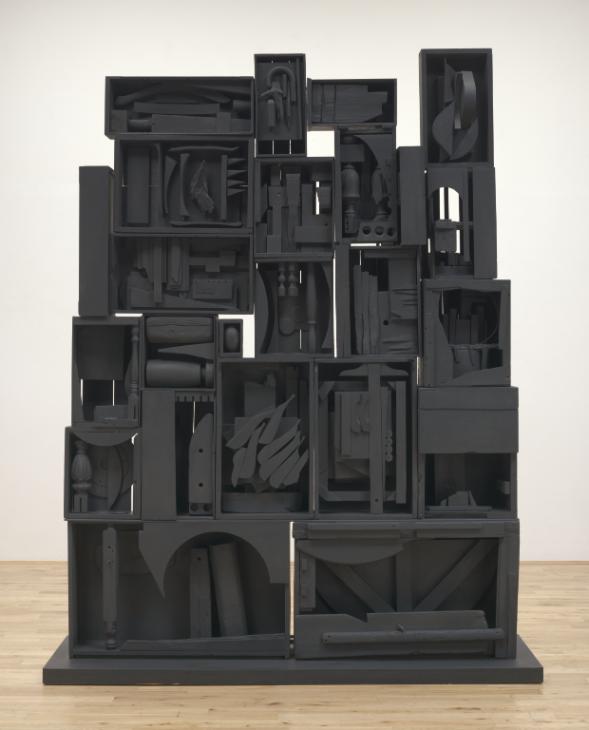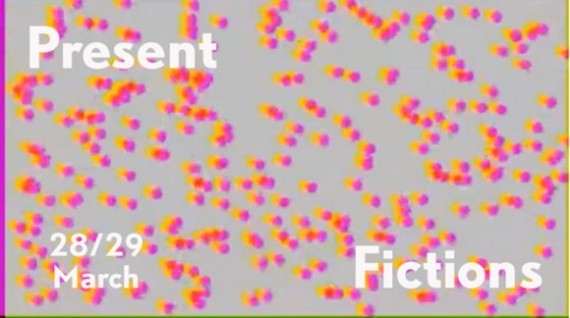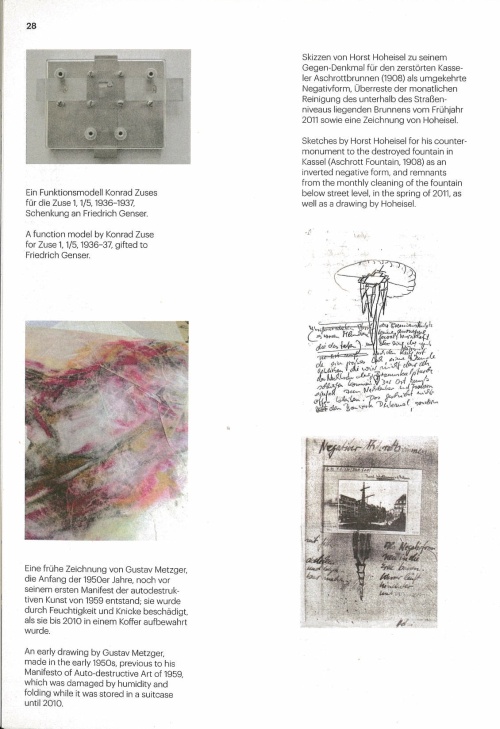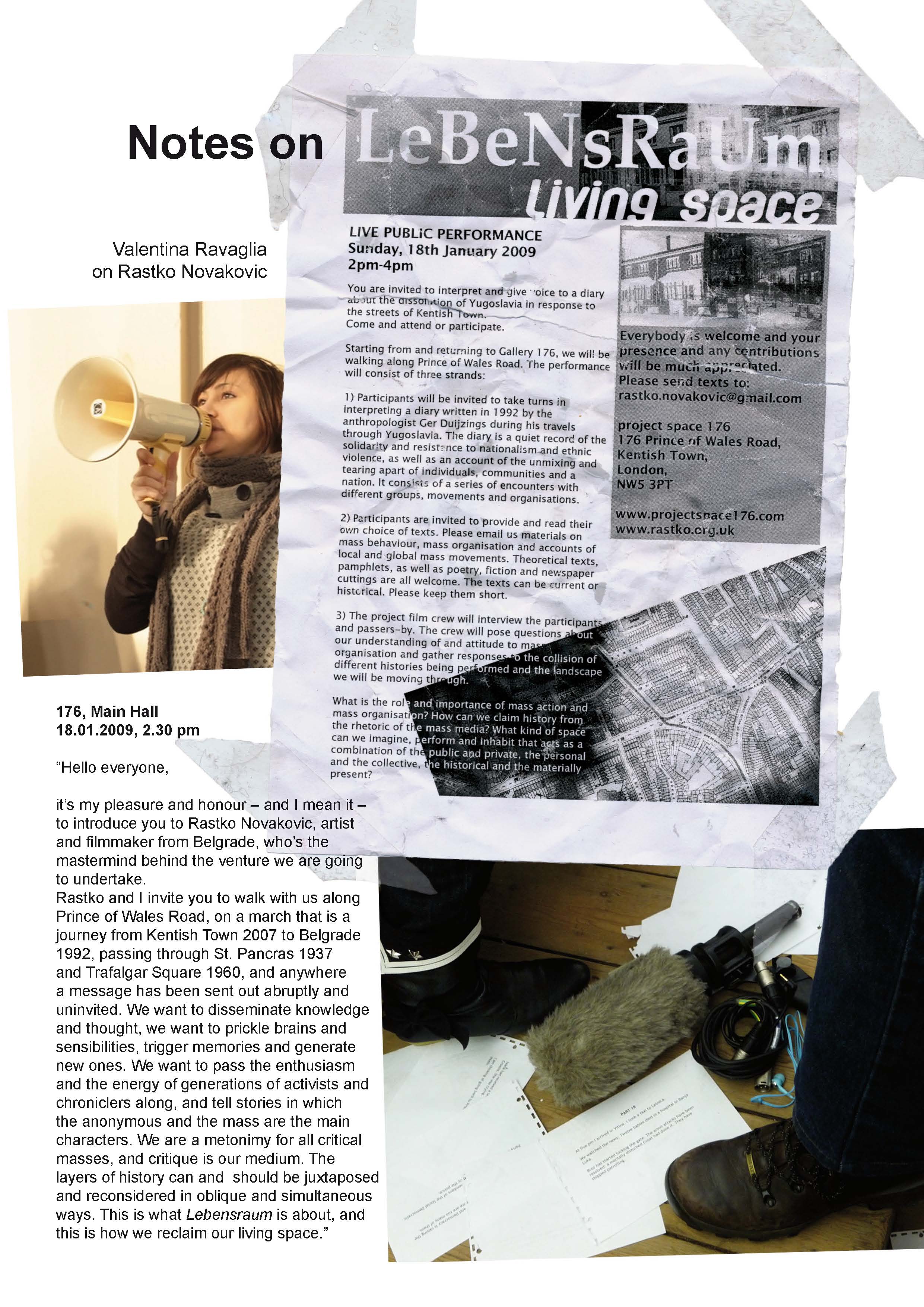This is an edited version of a review/essay originally published in Supercream_Magazine, n. 00, Autumn 2008, which is no longer available online.

Cyprien Gaillard, The Arena and the Wasteland, 2008, 5th Berlin Biennial for Contemporary Art at Skulpturenpark Berlin-Zentrum. Photo: the author.
Berlin Biennale 5. When Things Cast No Shadow, or the exhibition as nothing in particular
In photography, the light reflected by an object casts an image onto some photosensitive material, an image that refers to very specific coordinates of time and space: that particular frame, as exposed for a given duration. As with direct eyesight, it’s the modulation of highlights and shadows recorded by the camera that allows for the visual recognition of an object as reproduced on a bi-dimensional surface through this process. There is a point, though, when the given object is no longer discernible, when an overly long exposure turns the image into a more or less even light flare. Shadow is an essentially time-specific element, as sundials unmistakably testify. When things are considered for an extended duration, the shadow they cast loses its temporal specificity, but they retain their immanence: the Heideggerian thingness of the thing remains. Only, our phenomenological perception of what these things are, and of our experience of such things, is stretched in time.
The 5th Berlin Biennial for Contemporary Art was as much about things as it was about time. As a matter of fact, When Things Cast No Shadow was about no-thing in particular. As curators Elena Filipovic and Adam Szymczyk explained in the afterword to the publication that accompanied the Biennial (calling it catalogue doesn’t do it justice, as it was a curatorial project in its own right, a gathering-within-the-gathering):
Engaging critically in the conceptual part of the artists’ working process, we understood our task as that of making possible the articulation of diverse artworks within a group show. A more common procedure might have involved selecting pieces that fit one or another preconceived idea or strategic assumption, or that could be used as examples to bring an existing model of exhibition-making into reality and in order to support an argument. But a number of questions kept troubling us in the process: […] Would it not be a reductive formalization to consider an artwork only to the extent that it corresponds to a set curatorial agenda […]? Is any overarching theme or category a sufficient reason for bringing an artwork into a biennial, or are these mostly just alibis that secure the curator’s supreme position over the tangle of meanings generated by a show?1
In many ways, When Things Cast No Shadow addressed the concept of exhibition-as-thing in the first place, with the firm intention of testing its limits and playing with its mundane dimensions. It was in fact with ill-concealed amusement that the curators organized two distinct opening celebrations for the Biennial: the “official” vernissage was held only two weeks after the first satellite exhibition was unveiled at the Schinkel Pavilion, part of a rotating programme which saw selected BB5 artists select and install works by one figure inspiring their own practice. Similarly, the last of these exhibitions in the Schinkel Pavilion’s octagonal room (which, with its eerie 1970s GDR interior within a neoclassical shell, in itself generates a sort of spatialised time warp) nonchalantly closed two weeks after the Biennial had “ended”.
With this calculated operation, the curators subtly established temporal dissonance as a leitmotif for the Biennial, giving confused art-world jet-setters a first taste of its performative, excessive nature. By fragmenting the exhibition itself into a puzzle that cannot be solved, Filipovic and Szymczyk tackled the very possibility of experiencing an art show – any art show – as a complete, unitary, linear narrative. Treated as more than a thematic core, this question was conjugated throughout the Biennale in a number of different forms and tenses. It was implicit in its ambiguous beginning, and consistently reinstated throughout the night programme, conceived as a parallel exhibition and titled Mes Nuits Sont Plus Belles Que Vos Jours: six nights out of seven, the Biennale assumed a different form, migrating to a different venue with different artists and for different publics. This way no one, not even the curators themselves, could experience the Biennale as a coherent whole. Elena Filipovic had already demonstrated an interest in the temporal dimension of artworks and of their cumulative experience as an “exhibition”: in Let Everything be Temporary, or Where is the Exhibition?, a show she curated at Apex Art, New York in 1997, Filipovic had deployed an ever-changing combination of unstable, self-destroying and ephemeral artworks in order to highlight the ungraspable, performative nature of the exhibition as expanded/expanding event.
When Things Cast No Shadow was punctuated by moments of deliberate disruption, intended to make the visitors feel particularly aware of how their experiences and expectations can be manipulated, to a certain extent, by the curatorial mise en scène. Some commentators considered the choice of the Skulpturenpark Berlin_Zentrum as a venue slightly sadistic, with many early visitors, not knowing exactly what to expect, forced to trek around a muddy, overgrown wasteland in their party heels and designer clothes, frowning at the site map whilst trying to discern genuine urban debris and spontaneous vegetation from trees performatively transplanted from the roof of the Palast der Republik (Ulrike Mohr’s Neue Nachbarn) and anti-monumental scaffolding structures (such as Ania Molska’s Untitled, complementary to her videos shown at KunstWerke, key to understand the exhibition’s multi-layered take on things). With its melancholic, understated ambiance, the Skulpturenpark – which existed independently from the Berlin Biennale as a project run by the KUNSTrePUBLIK e.V. collective – was possibly the most successful, and likely the most overlooked, of all four venues. Even Kateřina Šedá’s Over and Over was deceitfully playful, yet imbued with a sense of nostalgia and hopelessness, as the entropy of things made the trespassing props gradually collapse or disappear.

Kateřina Šedá, Over and Over, 2008, 5th Berlin Biennial for Contemporary Art at Skulpturenpark Berlin-Zentrum. Photo: Uwe Walter, 2008.
This is a place where the spatial and temporal boundaries of the exhibition can really be tested and eroded. The Duchampian process of recontextualizing everyday objects is here daringly reversed, so that the matter of art and that of our daily existence can merge and turn absolute aesthetic indifference into an amplification of our experiences of the world. Despite the historical and political resonances of the site, which used to be crossed by the Berlin Wall, the inclusion of the Skulpturenpark in the BB5 was not a symbolic gesture but a very real space, a phenomenological bootcamp of sorts which had to be physically experienced in order to be fully grasped: the rawness of the place felt genuine and brutal, enough to make one’s visit inherently unpleasant. Some of the works placed in it were as movingly trivial and annoyingly honest as only reality can be, without any artifice or grand claim. Only in a context like this can a piece like Cyprien Gaillard’s The Arena and the Wasteland appear romantic, uncanny and truly epiphanic without any forced rhetorics, its deadpan strategy reinforced by the discursive space of the exhibition plot (pun intended).
Other aspects of the Biennial betrayed a self-aware attitude, at times verging on the navel-gazing, as the clique of art professionals was ironically addressed and teased more than once throughout the exhibition. At the entrance to KW – main venue and Biennial headquarter – a pirate-like strongbox provided by Superflex invited members of the public to submit the four coupons that had been circulated across the four venues of the so-called Grand Tour of summer 2007 (Kassel, Basel, Venice and Muenster). “Collect all four to win a trip to Zanzibar”, the coupons said, without announcing when and how the competition would take place. No need to, as whoever got all four coupons probably went to Berlin as well, only to realize they had been unwittingly participating in a tongue-in-cheek “art draw” orchestrated by Superflex. Significantly, the actual draw served as mock-final-event to the Biennial – a unique opportunity for whoever missed Cattelan’s 6th Caribbean Biennial…2
If the strongbox welcomed KW visitors in a strategic location by the cloakroom, the entire structure of Mies’ Neue Nationalgalerie was subverted with a simple, yet striking gesture: the two austere kiosks near the entrance, designed to be used as cloakrooms, hosted the two specular parts of Susanne M. Winterling’s installation Eileen Gray, the Jewel and Troubled Water, a reflection on Mies’ building as thing and more in general on architectural intrusions, whilst the bright yellow shapes of Gabriel Kuri’s Items in Care of Items became props in an ongoing impromptu performative piece that the visitors were invited (or forced) to constantly modify by adding and subtracting (that is, dropping and later collecting) their own things. Again, the material of art and that of life converge and overlap in the collective activity of creative DIY coat-checking.
The exhibition in Mies’ glass hall variously plays with its own iconic container and its various connotations – museum, architectural landmark, historical trace, showcase, political token and so on – at once transparent and opaque, flexible and rigid. Some works took the form of museums-in-the-museum, like Susanne Winterling’s aforementioned intervention, Haris Epaminonda’s untitled cabinet of curiosities and the hauntingly enigmatic Pygmalion by Rosalind Nashashibi and Lucy Skaer. This may be read as a witty reference to Documenta 5 and its “museums-by-artists”, but Szeeman’s systematic obsession and compulsion to control could only be used here in a negative dialectical form. And as the dissection of the Neue Nationalgalerie’s glass hall can be interpreted as a critique of exhibition spaces, museums and institutions at large, the four venues of the Biennial configure themselves as four curatorial Exercises in Style, each manifesting a different experimental approach to a-systematic exhibition making as a narrative form.
The 5th Berlin Biennial started as a pointless narrative, with no theme and no direction, no real beginning and no clear conclusion, no clear separation between fact and fiction. It is the story of its own making, a metanarrative in the style of Italo Calvino or perhaps an unreliable-therefore-true journal a la Pessoa. It is an unfolding of possibilities. The curators themselves pointed at the Heideggerian concept of Zuhandenheit (“readiness-to-hand”) as a hermeneutical key to their project: it is only through the everyday, worldly experience of things that we can begin to understand our Being-in-the-World.3 This could be a return to a new found relevance for Biennales as surveys of contemporary practices, as well as of contemporary experiences. Back to square one, then: the thing (no-thing in particular) and our experience of it, and our experience of ourselves experiencing such things over time.
Valentina Ravaglia









